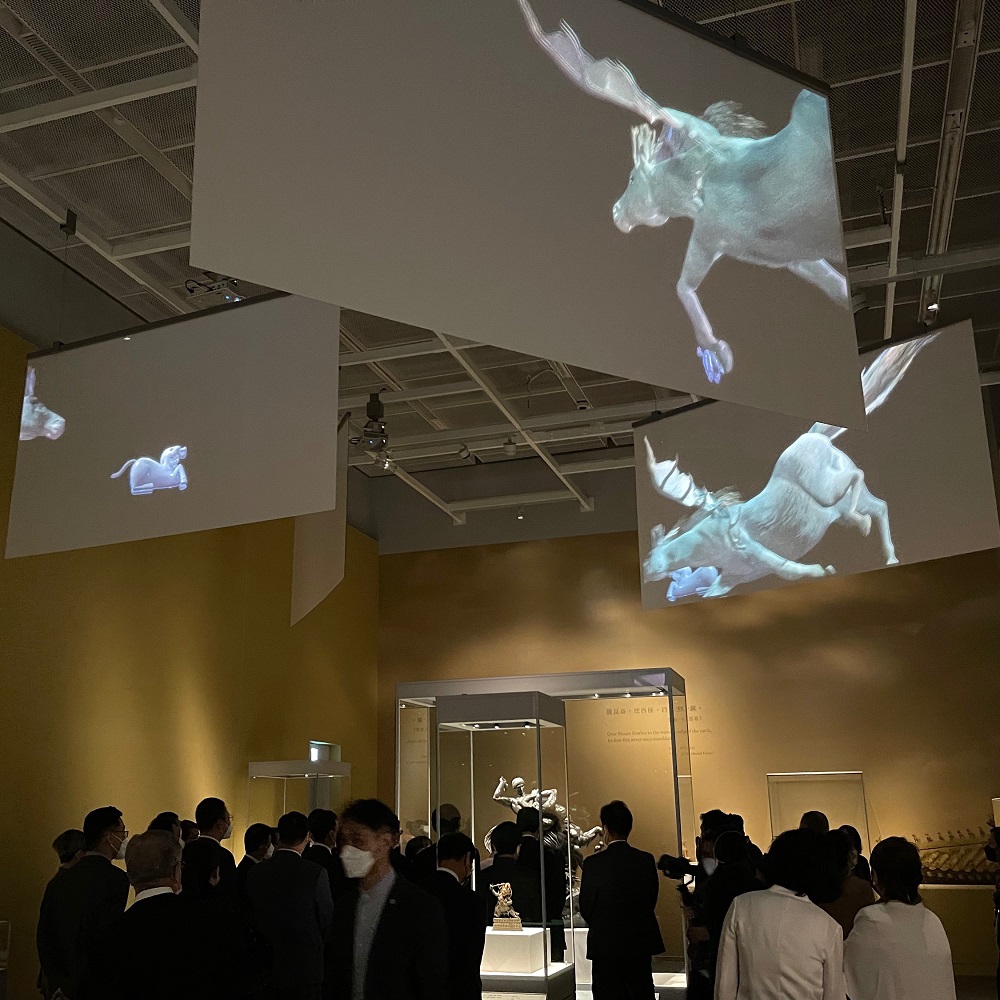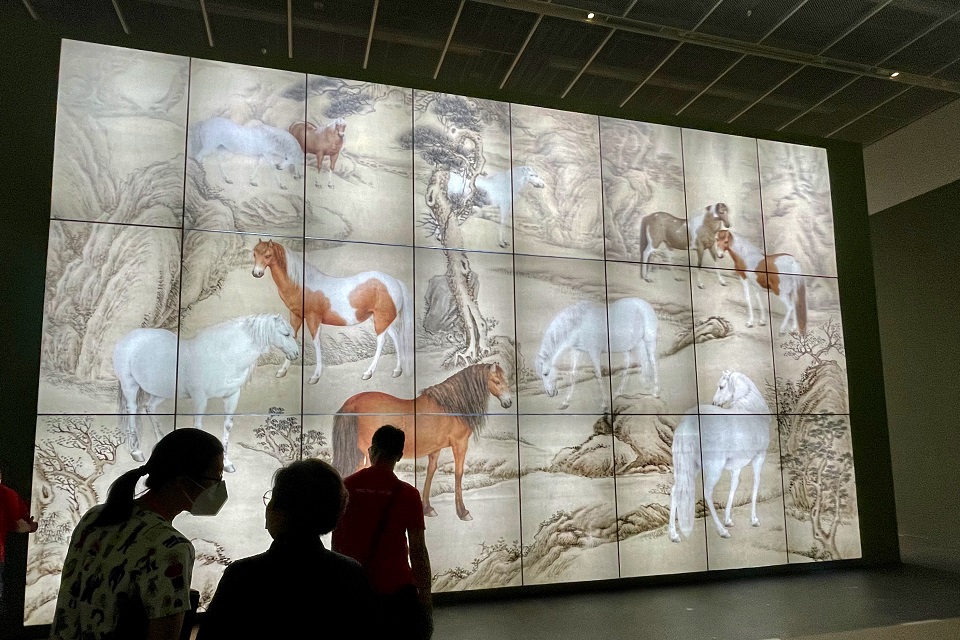Discover HKBU
Bringing the Palace Museum's treasures to life
28 Jul 2022
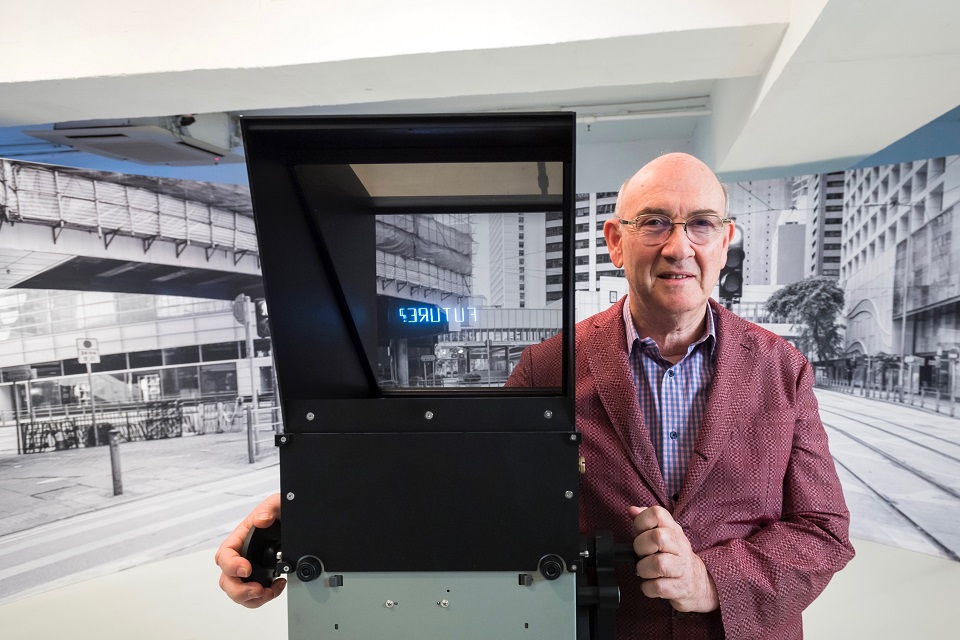

Visitors in Hong Kong can explore over 900 priceless treasures from the Beijing Palace Museum at the recently opened Hong Kong Palace Museum (HKPM), and Professor Jeffrey Shaw, Chair Professor of the Academy of Visual Arts, has created a number of special installations that use new media techniques to interpret these historical works from the past.
“I am excited to have been able to make five artworks for the HKPM, which are new media interpretations of many original works in the Museum. They provide the public with contemporary aesthetic experiences that are also intended to provide a path to better appreciate and understand the historical artefacts,” says Professor Shaw.
As a well-known visual artist who is famous for his innovative use of new media over the last 40 years, for this latest exhibition, Professor Shaw worked with a variety of artists and experts, including Sarah Kenderdine, a Professor of Digital Museology at the École polytechnique fédérale de Lausanne, as well as Victor Wong and his Hong Kong company VFX Nova, who made valuable contributions to the project.
Dreams of the past
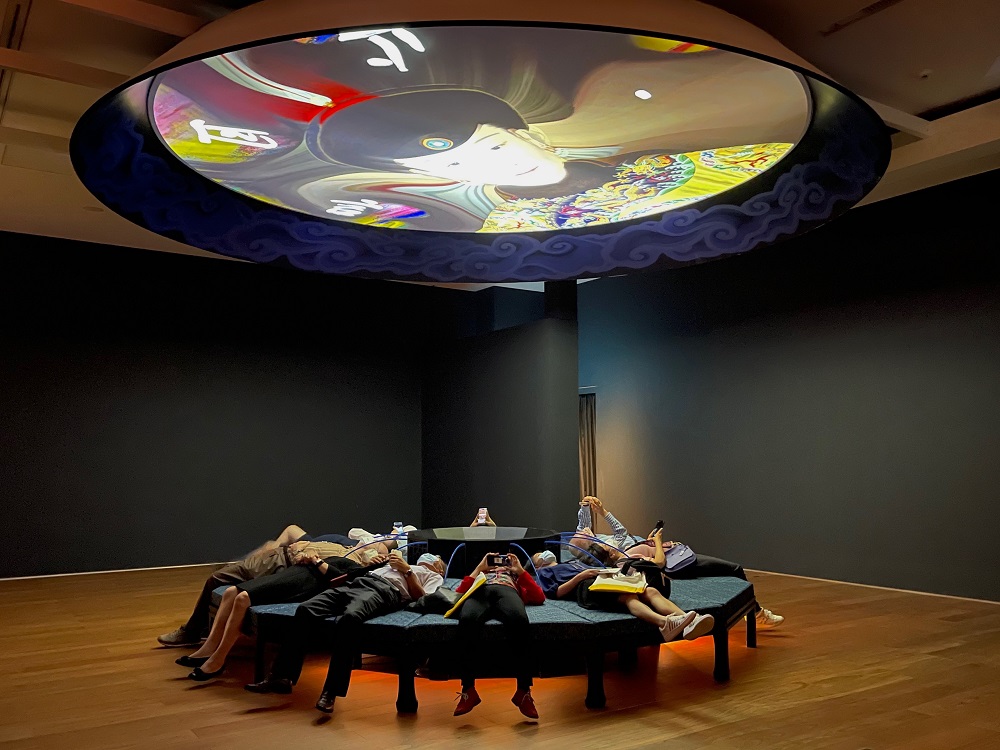

In the HKPM exhibition, Professor Shaw’s five installations are spread over three galleries, and he has been working on them with his collaborators for the past two years.
One of the installations is entitled Dreamscape of the Qianlong Emperor. In its gallery space, twelve people can lie down on a specially designed circular couch modelled on Qing dynasty furniture, and then gaze up at a five-metre-wide circular video projection on the ceiling.
The artwork is based on a poem that the emperor wrote following the death of his wife Lady Fuca, and Professor Shaw worked with master Chinese calligrapher Wang Dongling to bring the poem to life, and it is also narrated in both Cantonese and Putonghua.
“The poem at the heart of this work expresses the depth of his sense of loss and sadness,” says Professor Shaw. “Most of the iconographic elements in this video can be found on objects or paintings in the Museum, as well as the original poem written in the emperor’s hand that Wang Dongling re-inscribed for this artwork. Its iconographic aesthetic, populated by dragons, phoenixes, butterflies and other symbolism, expresses the correlative language of Qing thinking and feeling, and illustrates the ontologies of Qing court life, its history and culture.”
Reuniting the emperors
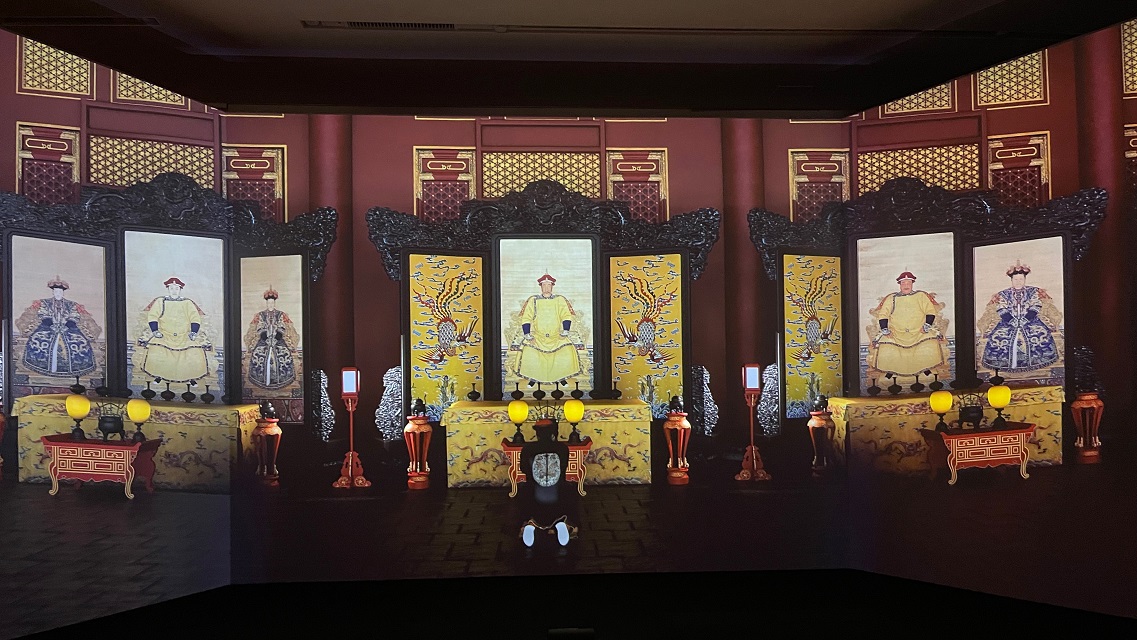

The next project and installation, entitled Ancestral Hall & Imperial Portraits, is a 12-metre-wide 180-degree panoramic projection on three screens. While many of the portraits from the Ancestral Hall currently reside in other museums, Professor Shaw’s artwork brings these portraits back into the Hall, and the video features a flyover of the Forbidden City in the Qing era in the wintertime, before taking the viewer into the building itself.
“The intention of this video is to bring all ten sets of portraits back into the Ancestral Hall in a visually immersive 1:1 scale experience that includes seeing the Qing emperor performing the traditional ritual in front of these portraits,” says Professor Shaw.
Horsing around
As visitors enter Gallery 9 in the Museum, they will come across three installations that playfully explore different aspects of the horse, a theme that can be found in different civilizations around the world.
In particular, this unique exhibition offers visitors a rare opportunity to learn about the rich symbolic, social, military, and political significance of the horse, one of the most beloved subjects in Chinese art.
In Flying Mythological Horses, four screens hanging at different heights show 3D animations of three flying horses from the Palace Museum collection, while also integrating cross-cultural references to winged Iranian and Greek horses.
“My intention is that as visitors walk around in the gallery, every now and then they look up and catch a glimpse of these mythological horses passing by,” he says. “These fantastical creatures live in a virtual reality that is made visible by means of the projections – the screens become portals into a mythological ancestral space through which these horses from antiquity can fly into the gallery.”
In Lenticular Procession of Tribute Horses, Professor Shaw used lenticular printing – a technique that takes a 2D image and gives it a 3D depth effect. The artwork is inspired by paintings of the tribute horses in the museum collection such as those of Giuseppe Castiglione, who helped create a hybrid style that combined Western realism with traditional Chinese conventions. Its 24 lenticular prints are mounted in a monumental 10-metre-wide and 6-metre-tall lightbox.
“Helped by HKBU alumnus and artist Jeremy Ip, I digitally extracted ten horses from the original paintings by Jean Denis Attiret that are on view in the Museum, and brought them together in one long procession that shows them coming from afar to arrive life-sized in the gallery. I then combined background elements from these original paintings to create a unified scenery for this three-dimensional parade of tribute horses,” he says.
Interactive experience
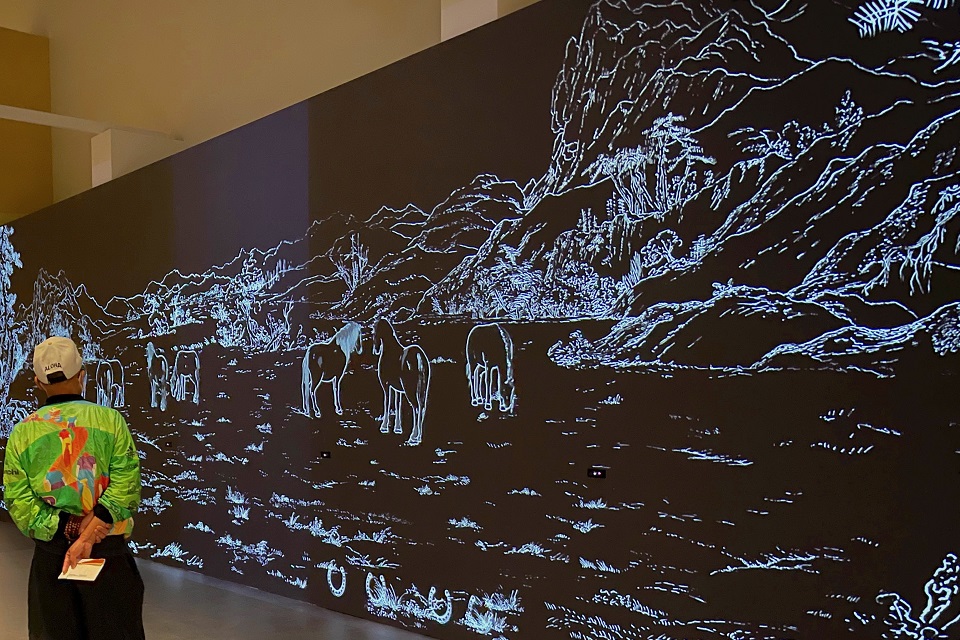

In Eight Interactive Horses, the eight mythological steeds in this installation are line-drawn animations based on the motion capture data of real horses. Drawn in the style of Giuseppe Castiglione, and inverting the black and white colours of his original 100 horses sketch, these horses subtly react in real-time to the presence, location, and movements of visitors. Professor Shaw spent time at a riding school in the New Territories to model their actions on actual horse behaviours as they interact with each other and with humans. Projected onto a 10-metre-wide screen, and with sensors to track the position and movement of its viewers, Professor Shaw is still refining the interactive programming of this work. “I analyse how people interact with this work so that I can fine-tune it to arrive at an optimum level of audience engagement,” he adds.
Professor Shaw says he feels very honoured to have been invited together with his colleagues to create these five interactive installations to accompany the masterpieces coming from Beijing’s Palace Museum. “Each artwork is a dialogue with the historical artefacts on show in the HKPM. After twelve years in Hong Kong, my understanding and appreciation of Chinese art has profoundly increased, and this was an opportunity to engage my own art practice with these treasures of Chinese culture,” he says. “By means of these new media artworks, I want to amplify people’s enjoyment of having visited the HKPM, and at the same time augment and illuminate their appreciation of the canonical artworks.”
The Hong Kong Palace Museum, which is based in the West Kowloon Cultural District, opened in July 2022. Find out more about the exhibition: https://www.hkpm.org.hk/en/exhibition
